In the Maple Leafs Weekly Twitter Roundup, we’ll highlight stories, thoughts, and tidbits from the past seven days, featuring commentary from both fans and insiders alike.
Related: Last Week’s Maple Leafs Twitter Roundup
Following their 4-2 loss to the Vegas Golden Knights on Tuesday night, the Toronto Maple Leafs are now 9-10-4 on the season – good for a paltry 78-point pace. The team has hit a wall, losing six in a row with just two regulation wins in their last 14 games.
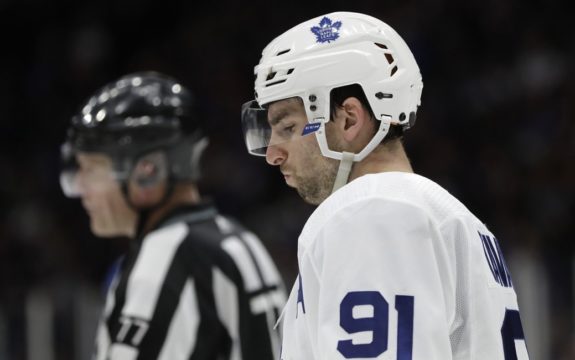
With 23 games played, we’re at the point where what you see is generally what you get – and it’s easy to see that the Maple Leafs are simply a bad team. Barring a miraculous, once-in-a-lifetime run like the St. Louis Blues pulled off last season, it’s looking like Toronto will end up on the outside looking in.
The Thanksgiving Cut-off
You may have heard about American Thanksgiving as a key cut-off date for determining postseason positioning. But just how important are the standings around this time year? Is it realistic that the Maple Leafs could recover to make the playoffs?
Think of it this way: if 77.5 percent of teams in the playoffs at Thanksgiving maintain their spots, that means 12.4 out of 16 playoff teams right now will make it. That leaves three or four spots still up for grabs. For a bubble team like Toronto, that sounds promising – until you read this.
To even be in contention for a wild card spot, the Maple Leafs need 75 points – a .635 points percentage – the rest of the way. For reference, the Washington Capitals had a .634 points percentage last season, good for fourth in the league. Put simply, Toronto needs to play like the fourth-best team in the NHL over the next four months to make the playoffs. That just doesn’t seem likely given what we’ve seen so far.
Is It Time to Tank?
You heard it from Scott Wheeler: the Maple Leafs have performed like a tanking team, with the seventh-worst points percentage in the league as of Nov. 21. Is it time for them to accept defeat and embrace the tank?
As you may recall, Toronto gave up their first-round pick to Carolina this past summer in order to get rid of Patrick Marleau and his bloated $6.25 million contract. There was one important condition on the pick, though: if the Maple Leafs are poised to draft in the top-10 in 2020, they’ll keep it and Carolina will get their 2021 pick instead. That’s an important safety net for Toronto considering how things are going so far.
But just as it seems unlikely that Toronto will recover to make the playoffs, it seems just as improbable that they’ll be this bad all season long. They should rebound to some extent once they have a fully healthy roster, so I wouldn’t expect a top-five pick.
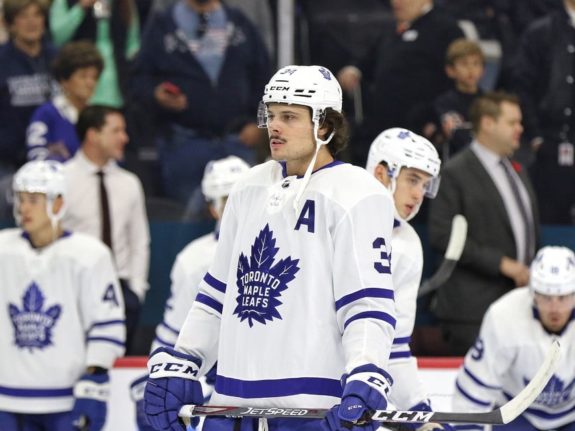
So what if they split the difference between their tank pace (.478 points percentage) and their playoff-bound pace (.635 points percentage)? That would give them a points percentage of .556, equal to 65 points, which would bring them to a grand total of 87 points on the season. Last season 87 points would have put you at 18th-overall – not quite good enough for the playoffs, but not quite bad enough to truly tank. Barring a draft lottery win, the Maple Leafs would get the 13th-overall pick, which would then be transferred to Carolina.
That means no playoffs and no draft pick – a truly wasted season.
Will the Real Tyson Barrie Please Stand Up?
When the Maple Leafs dealt Nazem Kadri to the Colorado Avalanche this July in exchange for Tyson Barrie and Alexander Kerfoot, it was believed that the offensive defenceman was the centrepiece (and arguably the best player) in the deal. That’s been the opposite of the truth so far.
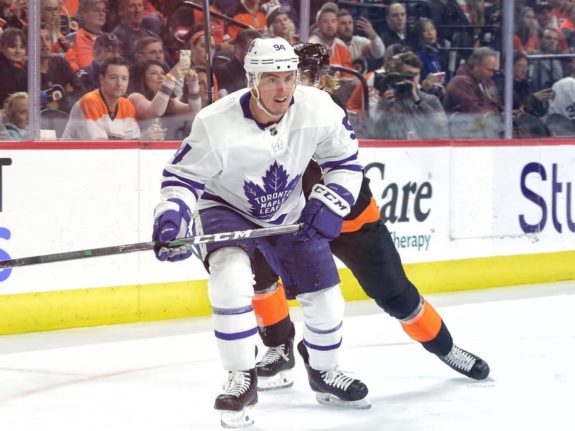
Coming off back-to-back near 60-point campaigns, Barrie looked poised to excel on an offensively gifted Toronto team. Through 23 games, he’s registered no goals and just seven assists. Meanwhile, he’s looked questionable in his own zone and not nearly as dynamic in the offensive zone as we expected. Is this a matter of poor performance or bad deployment?
It’s been written about quite extensively by now, but it’s clear that the Maple Leafs’ systems have changed for the worse this season. While they used to generate most of their offence from the slot, they’re now relying heavily on point shots, which is a major cause of their middling offence.
What this means for a player like Barrie, who is used to joining the rush and carrying the puck deep into the offensive zone, is that he can’t generate offence like he’s used to. He and Morgan Rielly are being told to play more defensively and to make “safe plays,” which entails shooting from the blue line.
Here are Barrie’s 5-on5 shot locations from this season so far. Notice how almost all of them are from the point, with just two shots coming from prime scoring areas.
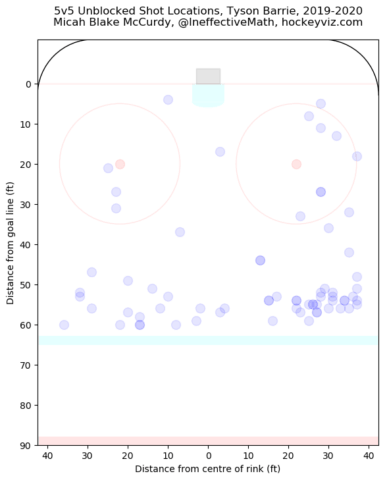
Now, look at Barrie’s last two years in Colorado, where he scored an average of 14 goals and 58 points per season. He was still shooting from the blue line, but he was also getting himself into scoring areas with a lot more frequency. This confirms to me that the defenceman’s struggles are mostly down to the Maple Leafs’ new system, which is hamstringing Barrie’s creativity – and the team’s offence in general.
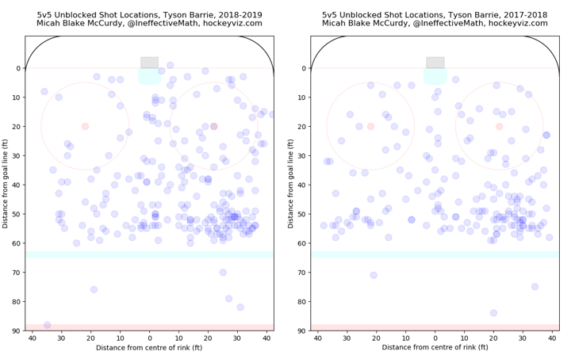
Is there any hope of Barrie bouncing back? I think unless the system changes (which probably only happens with a coaching change), he’s in for a frustrating season.
You could say the same for the Maple Leafs, too.
Stats from http://naturalstattrick.com/ and https://www.hockey-reference.com/